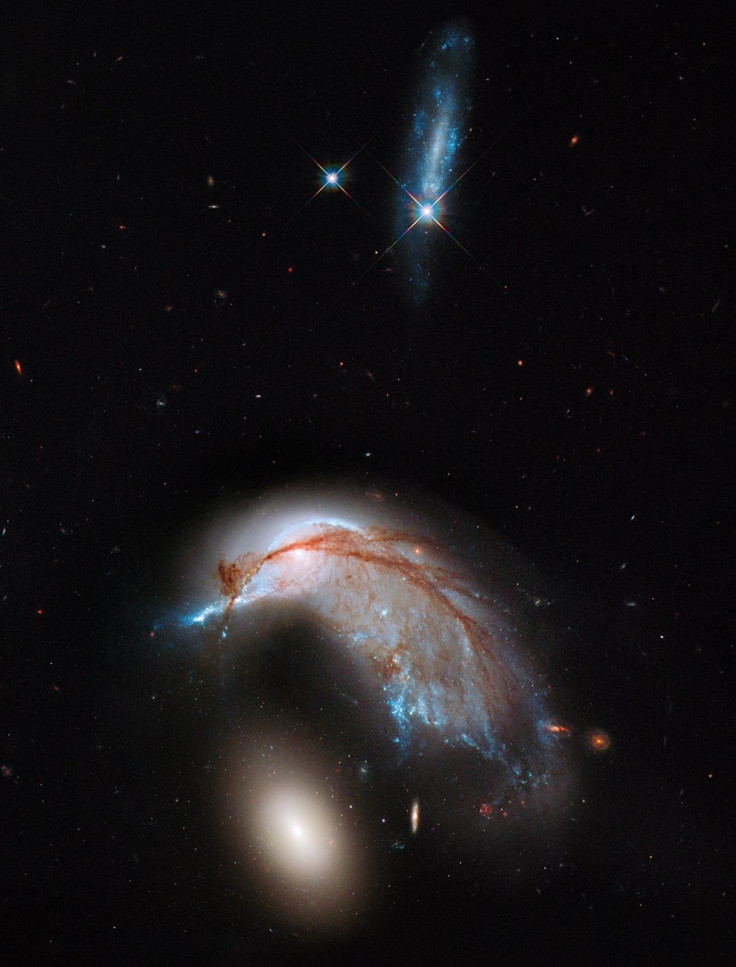Merge Of Galaxies Results In The Formation Of A Celestial Penguin

Astronomers compare a fusion of galaxies to an image of a porpoise or a penguin. Seen through a Hubble Space Telescope, the interacting galaxies, known as Arp 142, is a combination of NGC 2936 and NGC 2937. This is located approximately 326 million light-years away in Hydra, a southern constellation.
The galaxy at the top of the image is the NGC 2936, which is a combination of blue and red curves, resembling a celestial penguin, dolphin, or porpoise. This galaxy used to be a normal spiral galaxy just like the Milky Way. Lying beneath the NGC 2936 is the NGC 2937, which is a golden orb-like elliptical galaxy, resembling what seems like a giant egg. Interestingly, these two galaxies merged close to each other, creating a notable formation of a penguin guarding its egg. Although sweet and lovely, this image actually symbolises chaos and obliteration, as NGC 2937 has strong gravitational effects on NGC 2936, distorting, destroying, and deforming the latter.
As a result of this beautiful but chaotic formation, the NGC 2936 has turned from graceful to twisted. Its spiral arms cascaded into blue and red streaks due to the compression and ripping off of its dust and clouds of glowing gas by NGC 2937. Furthermore, the close proximity of the galaxies provoke the creation of a thousand new stars, or “star burst,” which is seen in NGC 2936’s bright blue and red knots.
Different parts of the two galaxies have formed new areas due to the interaction. The “eye” of the penguin was once NGC 2936’s bright central bulge. The “egg” formed by the NGC 2937 was formed by the vast bed of yellow and red stars comprising the galaxy in the past. The blue star of NGC 2937 has vanished, signalling that “star burst” has indeed occurred.
NGC 2936 and NGC 2937 will continue to interact and create new formations, which may be associated with other structures. They are expected to undergo further celestial changes, and thus alter its appearance and gas composition, until they unite to become one galaxy.
To contact the writer, contact rinadoctor00@gmail.com





















